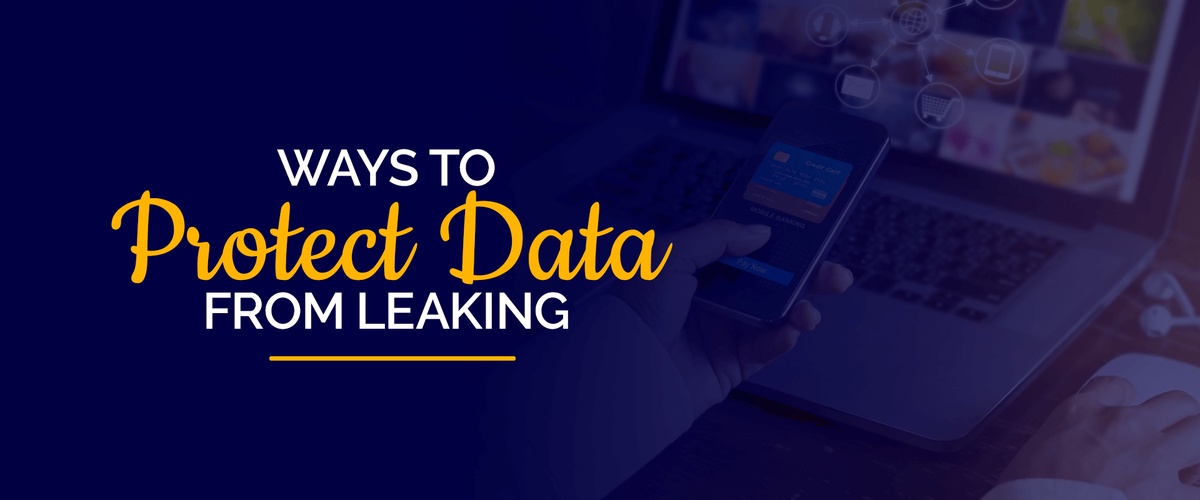Introduction
In today's digital era, data is the lifeblood of businesses, making it crucial to protect sensitive information from falling into the wrong hands. Data leakage poses significant risks, including financial loss, damage to reputation, and legal consequences. To mitigate these threats, organizations must proactively implement robust measures to prevent data leakage. In this article, we will explore four effective strategies to safeguard data and maintain the confidentiality, integrity, and availability of critical information.
Employee Education and Awareness
Data leakage often occurs inadvertently through employee actions, such as clicking on phishing emails or mishandling sensitive information. By promoting a culture of cybersecurity awareness, organizations can empower their workforce to become the first line of defense against data breaches.
a) Comprehensive Training: Organizations should conduct regular cybersecurity training sessions to educate employees on the importance of data protection, common attack vectors, and best practices for maintaining data security. Training should cover topics such as password hygiene, email security, safe browsing habits, and the responsible use of company resources.
b) Phishing Awareness: Phishing attacks remain a prevalent method used by hackers to gain unauthorized access to data. Employees should be trained to identify suspicious emails, attachments, and links. Simulated phishing exercises can also be employed to reinforce awareness and test the effectiveness of training programs.
c) Data Classification and Handling: Employees should be educated on data classification protocols to understand the sensitivity of different information types. Clear guidelines should be established on how to handle and share sensitive data, including the proper use of encryption, secure file transfer protocols, and secure data storage practices.
Robust Access Controls
Implementing strong access controls is vital to prevent unauthorized access and reduce the risk of data leakage. By ensuring that only authorized individuals can access specific data, organizations can minimize the potential for internal or external threats.
a) User Authentication: Adopting multi-factor authentication (MFA) mechanisms, such as biometrics or token-based systems, adds an extra layer of security. This helps safeguard against stolen or compromised credentials, as hackers would require additional verification to gain access.
b) Role-Based Access Control (RBAC): RBAC assigns permissions based on job roles, granting individuals access only to the data necessary for their work. Regular access reviews should be conducted to remove unnecessary privileges and ensure compliance with the principle of least privilege.
c) Data Loss Prevention (DLP) Solutions: DLP solutions can automatically identify and prevent unauthorized attempts to access, copy, or transmit sensitive information. By monitoring data movements, these tools provide real-time alerts and enforce policies to prevent data leakage.
Secure Network Infrastructure
Securing the network infrastructure is paramount to prevent data leakage and external attacks. Implementing robust security measures at various layers of the network ensures that data remains protected during transit and at rest.
a) Encryption: Employing strong encryption algorithms, such as SSL/TLS for web communications or AES for data at rest, protects data from unauthorized access. Additionally, encrypting sensitive data stored on portable devices or removable media adds an extra layer of security in case of loss or theft.
b) Firewalls and Intrusion Detection Systems (IDS): Firewalls filter incoming and outgoing network traffic, blocking malicious attempts to access sensitive data. IDS monitors network traffic for suspicious activity, alerting administrators of potential threats.
c) Virtual Private Networks (VPNs): VPNs provide a secure tunnel for remote workers to access company resources. By encrypting data transmitted over public networks, VPNs mitigate the risk of data interception.
Incident Response and Data Backup
Despite preventive measures, organizations must prepare for the possibility of a data breach. A robust incident response plan and regular data backups are essential components of an effective data leakage prevention strategy.
a) Incident Response Plan: An incident response plan outlines the steps to be taken in the event of a data breach. It includes procedures for identifying and containing the breach, notifying relevant stakeholders, conducting forensic analysis, and restoring operations. Regular testing and updating of the plan ensure its effectiveness.
b) Data Backups: Regularly backing up critical data is crucial for business continuity and data recovery in the event of a breach or system failure. Backups should be stored securely, preferably offsite or in the cloud, and periodically tested to verify data integrity and restoration procedures.
Conclusion
Preventing data leakage is of paramount importance to safeguard sensitive information and protect the interests of organizations and their stakeholders. By implementing a holistic approach that encompasses employee education, robust access controls, secure network infrastructure, and incident response readiness, businesses can significantly reduce the risks associated with data breaches. Continuous evaluation, adaptation, and improvement of data leakage prevention measures are crucial in the ever-evolving landscape of cyber threats. By prioritizing data security, organizations can fortify their defenses and build a resilient foundation for the protection of critical information.


No comments yet